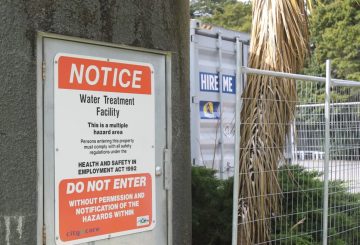정부는 정신 건강 문제가 있는 사람들의 111건의 전화에 응답하는 새로운 방법을 확대하기로 결정했습니다.
공동 대응 모델은 이제 전국에서 이용할 수 있습니다.이전에는 일부 지역에서만 사용되었습니다.정신적 고통이나 자살에 대한 생각 때문에 누군가 111에 전화하면 경찰, 구급차 직원, 정신 건강 전문가가 모두 도움을 청합니다.
경찰과 보건부는 내년 3월까지 내각에 세부 계획을 제출할 예정입니다.그들은 이러한 공동 대응이 어떻게 작동하고 이를 위해 무엇이 필요한지 설명할 것입니다.
Ayesha Verrall 보건부 장관은 이러한 변화가 5년에 걸쳐 이루어질 것이라고 말했습니다.모든 경찰서에서 이러한 대응을 할 수 있도록 하는 것이 목표입니다.이렇게 하면 정신 건강 지원이 필요한 사람들이 적절한 지원을 신속하게 받을 수 있습니다.
이 모델은 2020년과 2021년에 웰링턴에서 처음 테스트되었습니다.맷 모리스 상사는 팀들이 발신자에 대한 정보를 공유하고 도움을 줄 수 있는 최선의 방법을 결정한다고 말했습니다.그들은 전화를 건 사람을 아는 경우가 많습니다.즉, 항상 구급차나 경찰차를 보낼 필요는 없을 수도 있습니다.
오타고 대학교의 연구에서는 좋은 결과를 보여주었습니다.공동 대응팀이 일할 때는 병원 응급실로 가는 사람이 더 적었습니다.또한 팀의 도움을 받은 사람들도 이전보다 더 나은 경험을 할 수 있었습니다.
이 보고서는 공동 대응 모델을 더 많이 사용할 것을 강력히 제안합니다.
2017년 내셔널은 오클랜드, 크라이스트처치, 파머스턴 노스에서 이 모델을 테스트하기 위해 경찰에 800만 달러를 기부했습니다.노동당이 집권하자 그들은 계획을 변경했습니다.
이 변경에 따른 정확한 비용은 아직 알려지지 않았습니다.현재 이 모델을 사용하는 지역은 자체 예산으로 비용을 지불합니다.하지만 한 곳인 황가누이는 범죄 수익 기금에서 350만 달러를 받았습니다.
정신 건강 재단 책임자인 숀 로빈슨은 이것이 현명한 조치라고 생각합니다.검사 결과 많은 사람들이 병원이나 경찰에 가지 않고도 더 나은 도움을 받을 수 있는 것으로 나타났습니다.이렇게 하면 시간과 자원이 절약됩니다.
경찰 협회에서는 종종 경찰이 정신 건강에 너무 많은 노력을 기울이고 있다고 말하곤 합니다.협회의 크리스 케이힐은 다른 기관들도 이 일을 더 잘 할 수 있다고 말했습니다.
정신적 고통 때문에 경찰에 신고하는 사람들이 늘어나고 있습니다.2021년 6월부터 2022년 6월까지 경찰은 이러한 전화를 73,006건 받았습니다.이는 지난 5년보다 55% 늘어난 수치입니다.경찰은 정신적 고통 전화의 30%, 자살 또는 자살 시도 전화의 70% 를 접수했습니다
.






























































